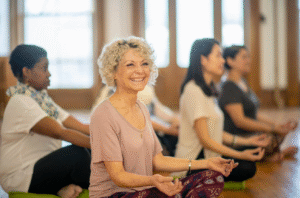
Self-Assess Your Mobility in Seconds to Avoid Injuries – Mobility Suite
- Dr. Mitch Israel
- Mobility, Movement & Pain, Posture, Stretching
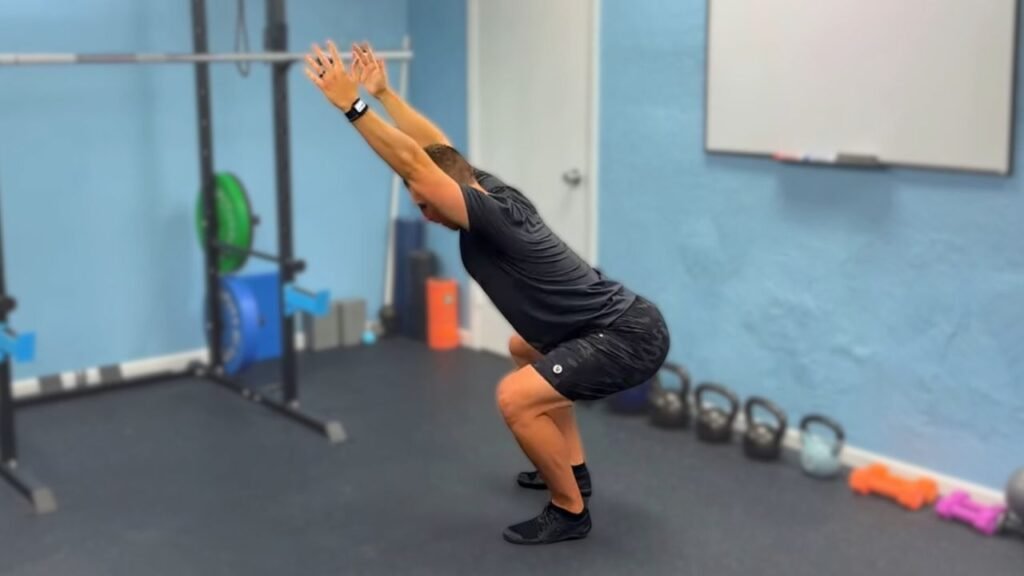
How to Self-Assess Your Mobility to Help Avoid Injuries
Is your body moving the way it should? Many people don’t realize the importance of mobility training until stiffness or injury limits their ability to move freely. By the time discomfort sets in, it’s often too late to prevent long-term damage. But with proactive mobility training and self-assessment, you can catch these issues early and protect your joint health. This article offers a step-by-step guide to identifying mobility limitations, helping you improve your range of motion and prevent injuries before they happen.
By understanding your mobility limitations, you can address them and prevent injury down the road. Below, we’ll cover a comprehensive self-assessment for mobility, along with targeted mobility tests for key joints like your neck, shoulders, spine, hips, and ankles.
If you prefer videos, watch the video version below!
The Importance of Mobility Training
Mobility training isn’t just for athletes or those recovering from injuries. It’s crucial for anyone who wants to move better, avoid injuries, and stay active. Mobility involves the ability of your muscles and joints to move through their full range of motion efficiently and without restriction. If mobility is compromised, you’re more likely to experience stiffness, pain, and even injury during everyday activities or workouts.
By incorporating regular mobility exercises into your fitness routine, you can improve your posture, enhance joint health, and prevent long-term issues like arthritis or chronic pain. The best way to start? A simple Self-assessment for mobility to determine where your mobility is lacking.
Mobility Tests for the Beginners
Starting on your mobility journey begins with understanding your current range of motion. These straightforward mobility tests will help you assess key areas of your body, providing valuable insights into your mobility limitations and guiding you toward targeted improvements.
Global Mobility Test: The Overhead Squat
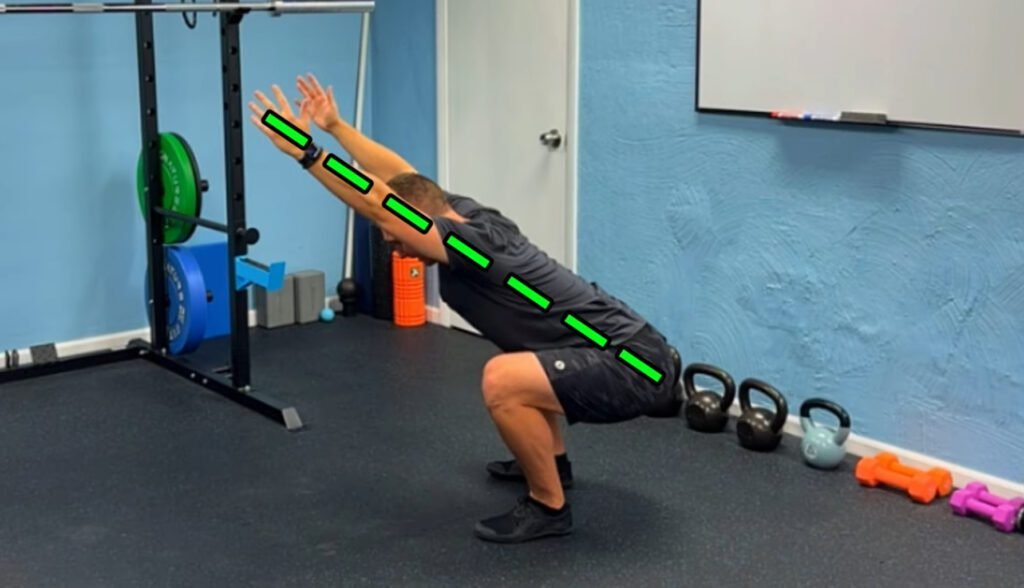
The first test you can perform is the overhead squat, which gives you a snapshot of your overall mobility. Here’s how to do it:
- Stand with your feet shoulder-width apart.
- Raise your arms overhead, extending them as far as you can.
- Keeping your arms overhead, squat down as low as possible while maintaining balance.
Ideally, you should be able to squat until parallel while keeping your arms aligned with your torso. If you find that your arms fall forward or you struggle to maintain a straight line from your hands to your hips, this is a clear sign that you need Mobility training.
The overhead squat assesses multiple joints simultaneously, including your shoulders, hips, knees, and ankles. It’s a great way to get a quick understanding of your global mobility. If you notice limitations, Mobility exercises are essential to restore proper movement and avoid injury.
Neck Mobility: Cervical Extension Test
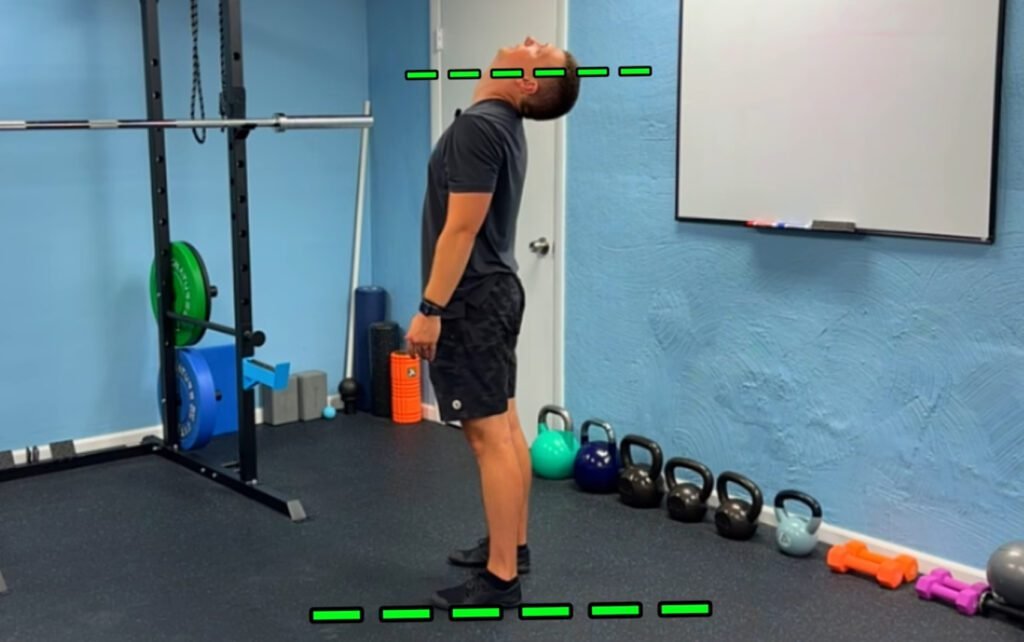
Next, we’ll break down joint mobility, starting with the neck. Cervical extension, or the ability to tilt your head back, is one of the first ranges of motion that desk workers tend to lose. Poor neck mobility can lead to headaches, neck pain, and tension in the upper back.
To test your neck mobility:
- Stand or sit upright and slowly tilt your head back, looking up toward the ceiling.
- Ideally, your head should tilt back to a parallel position with the ceiling or floor.
If you can’t reach that range, or if you feel tightness or discomfort, it’s a sign that you need to work on your neck mobility. Desk work and prolonged sitting can cause stiffness in this area, but with proper mobility exercises, you can restore range of motion and reduce pain.
Shoulder Mobility: Shoulder Flexion Test
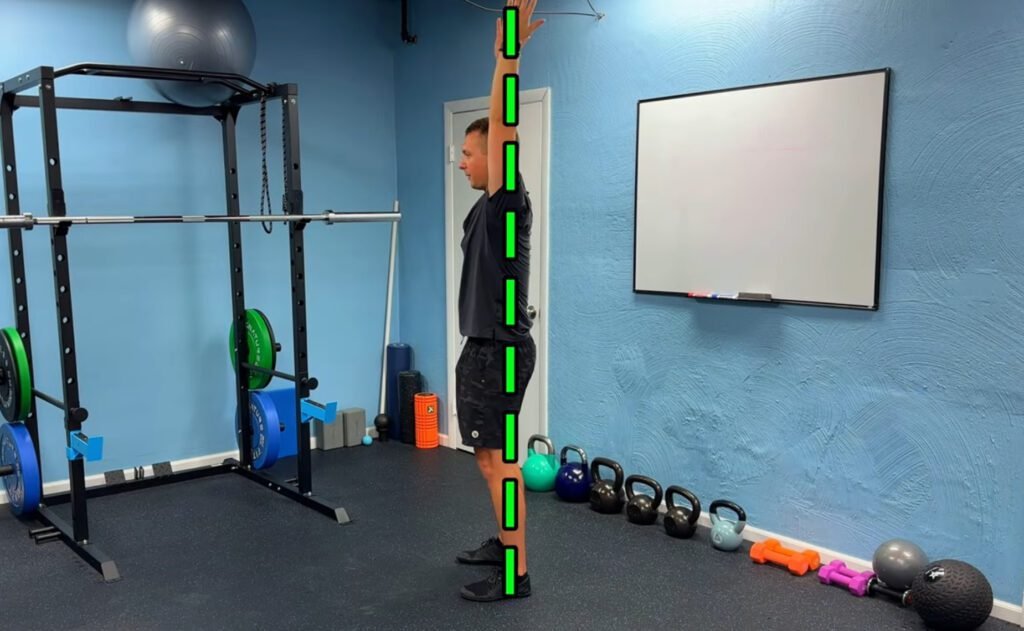
For shoulder mobility, we focus on shoulder flexion—the ability to lift your arms overhead without compensating through your spine. Shoulder mobility is crucial for many upper body movements, including lifting, pressing, and daily activities like reaching.
To test shoulder flexion:
- Stand with your arms at your sides and thumbs pointing forward.
- Slowly raise your arms overhead, aiming to keep your ribs down and spine neutral.
- You should be able to create a straight line from your hands down to your feet.
If you find that your arms fall short of this straight line, or if you compensate by arching your back, you may have shoulder mobility restrictions. Mobility training can help correct this imbalance, improve your posture, and prevent shoulder injuries.
Spinal Mobility: Thoracic Rotation Test
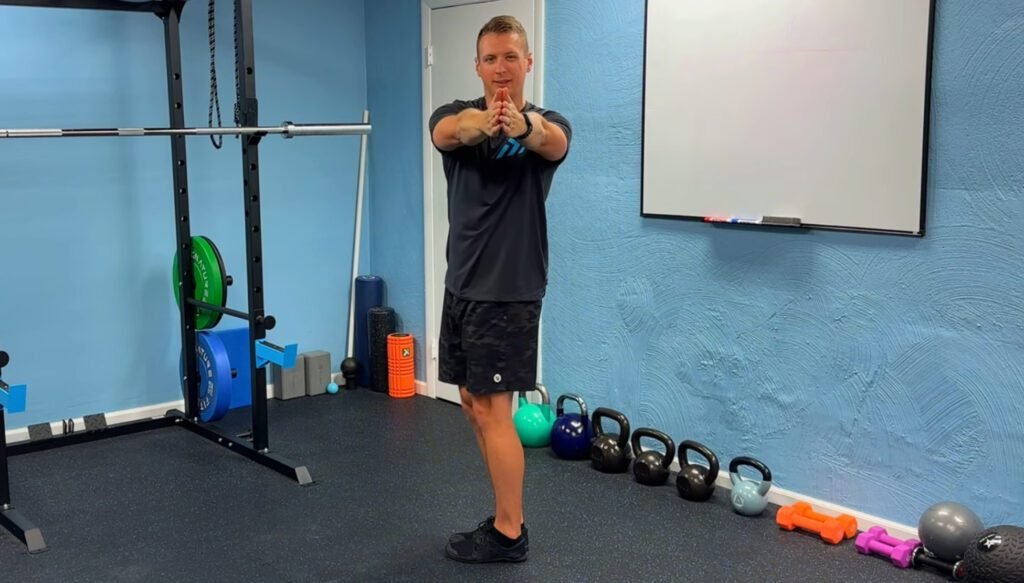
The spine, particularly the thoracic spine (mid-back), plays a key role in rotational movements. Many people lose spinal mobility over time, especially if they spend long hours sitting or have poor posture. Limited thoracic mobility can lead to back pain and restrict rotational movements in sports or daily life.
To assess your spinal mobility:
- Stand with your feet together and your arms extended in front of you.
- Rotate your torso to one side as far as possible, keeping your arms parallel to the floor.
- You should be able to rotate past 90 degrees.
If you’re unable to rotate beyond 90 degrees, you likely have limited spinal mobility, and this can contribute to back stiffness and increased risk of injury. Focus on spinal mobility exercises to restore your range of motion and keep your spine healthy.
Hip Mobility: Hip Flexion Test
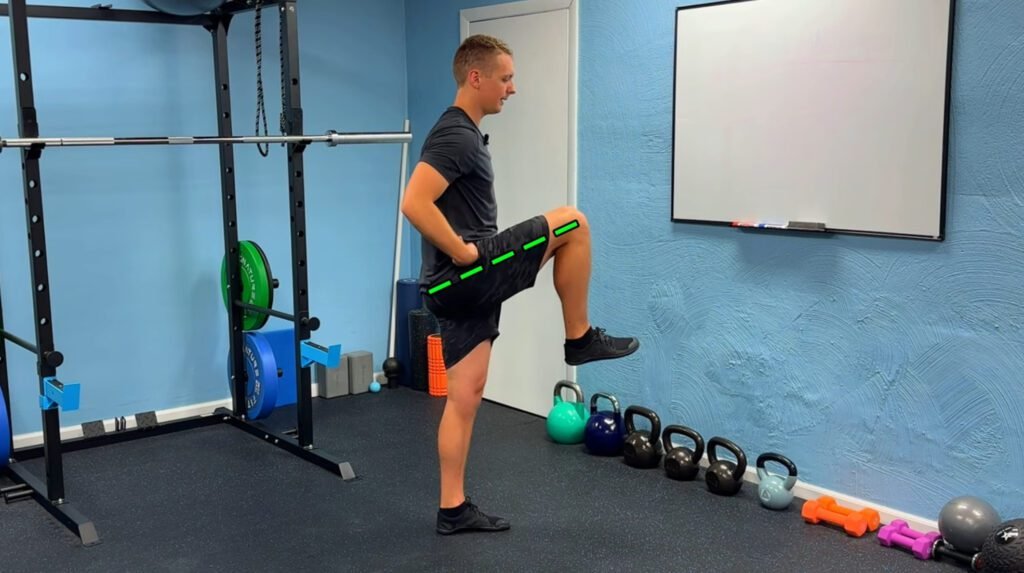
The hips are another critical area where mobility often declines, especially in people who sit for long periods. Hip flexion is essential for activities like squatting, running, and even walking. Reduced hip mobility can lead to compensation in other joints, causing knee or lower back pain.
To test your hip flexion:
- Stand and bring one knee toward your chest as high as you can.
- You should be able to lift your knee above parallel to the ground (at least 110 degrees).
If you feel a pinching sensation or get stuck around 90 degrees, this is a sign of limited hip mobility. Hip mobility exercises can help restore function and reduce discomfort, especially during lower body movements.
Ankle Mobility: Ankle Dorsiflexion Test
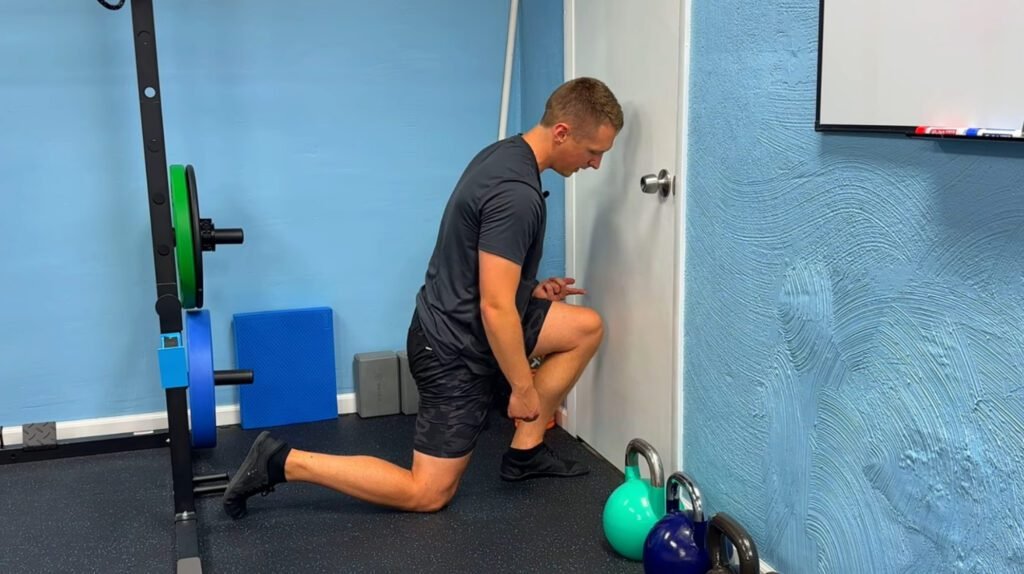
Finally, ankle mobility is essential for lower body exercises like squats, lunges, and running. Poor ankle mobility can cause compensations in the knees, hips, and lower back, leading to pain or injury.
To test ankle dorsiflexion:
- Stand facing a wall and place your toes about one fist’s distance from the wall.
- Drive your knee forward and try to touch it to the wall without lifting your heel off the ground.
If your knee can’t reach the wall, or if you feel tightness in your calf or ankle, this indicates limited ankle mobility. Improving ankle flexibility can significantly enhance your performance in exercises and reduce the risk of injury.
What To Do If You Have Mobility Restrictions
After doing this beginner self-assessment for mobility, you’ll have a clearer picture of where your mobility is lacking. If you fail one or more tests, don’t panic—it’s a sign that Mobility training should become a priority for you. The good news is that regular joint health exercises can make a significant difference, helping you move better, and feel better, and preventing injuries through mobility.
Start Your Mobility Training with the Mobility Suite Membership
If you’ve identified mobility restrictions through these assessments, the Mobility Suite App is your ultimate resource to improve your mobility and joint health. With daily mobility routines, targeted programs for specific joints, and mobility + strength programs, the Mobility Suite has everything you need to increase your range of motion, reduce stiffness, and prevent injury.
The Mobility Suite Membership offers:
- Daily routines designed to target common problem areas like the hips, shoulders, and spine.
- Premium mobility programs tailored to address your specific mobility restrictions.
- Mobility + strength programs that combine flexibility and strength training for better movement and injury prevention.
No matter where you are in your fitness journey, the Mobility Suite is your one-stop shop for moving better, feeling better, and getting stronger.
Conclusion
Mobility training is crucial for anyone seeking to maintain an active, injury-free lifestyle. By conducting regular self-assessments, you can quickly pinpoint areas where your body lacks mobility and take targeted action to improve them, preventing potential long-term issues. Don’t wait for stiffness to escalate into pain—prioritize your mobility and enhance your movement quality today.
Ready to take control of your mobility? Start your journey now and unlock a healthier, more flexible body with our expert-led mobility programs!
With the Mobility Suite App, you’ll have access to all the tools and resources you need to improve your mobility, protect your joints, and continue moving well throughout your life. Sign up today and take control of your movement and health!

